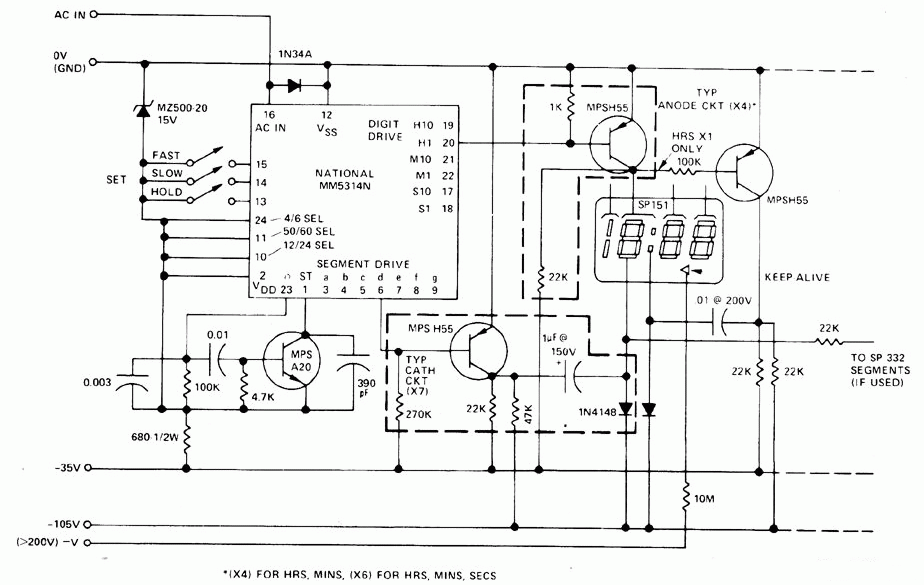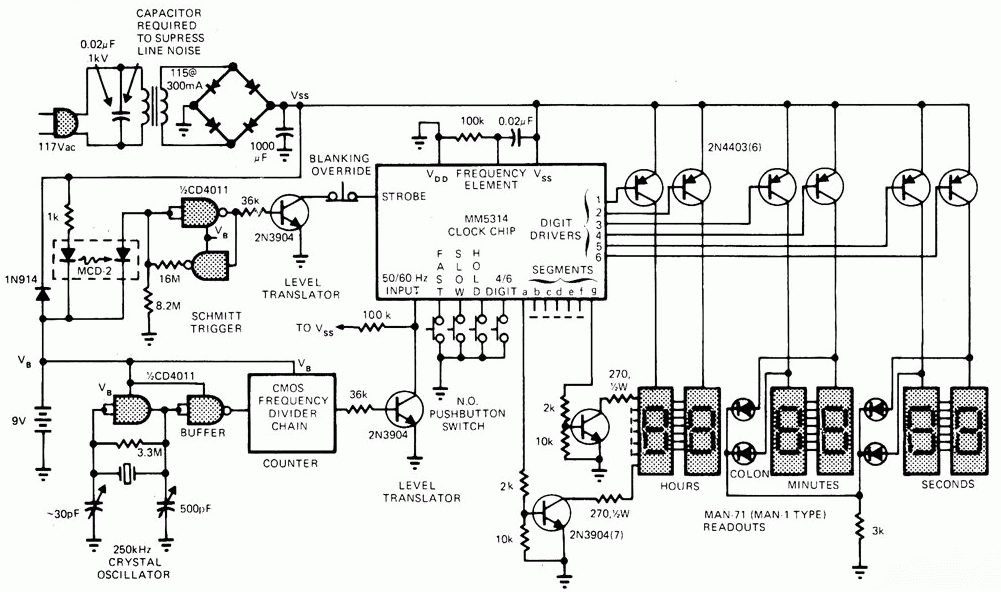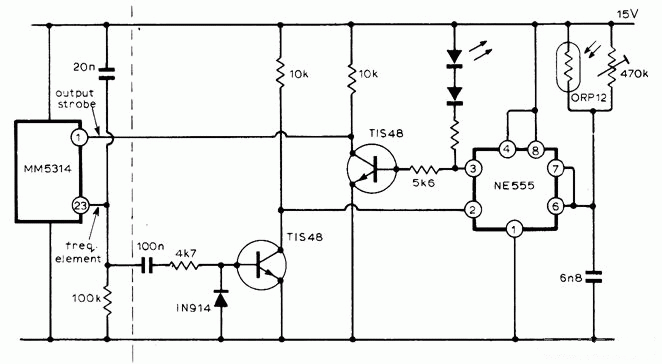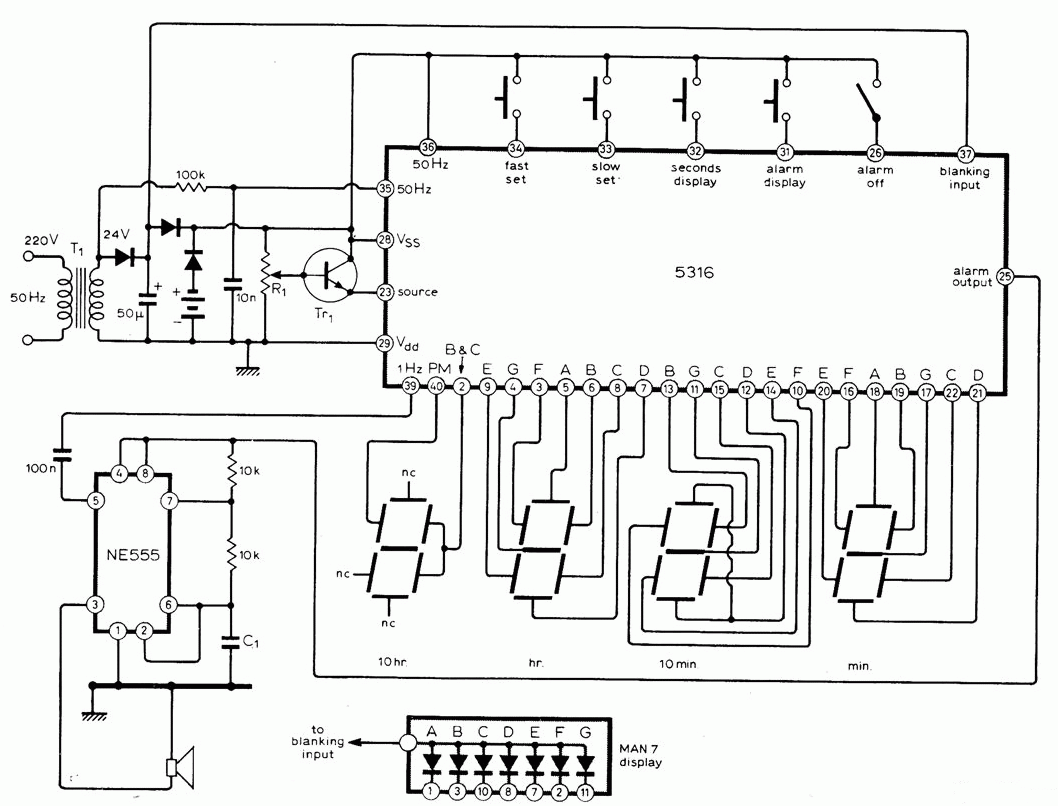This page is a collection of photographs, notes and circuits for vintage clock chips.
|
The Mostek 5017 is used in the Heathkit GC-1005 (MK5017PAA),
GC-1092A (MK5017AA) and GC-1092D (MK5017BA) clocks, as
well as other timekeeping products.
You can see the datasheet for this chip here. You can see a clock project using this chip by clicking here. This particular one is stamped Archer (Radio Shack's house brand), RS1755 with a date code of 7441 (1974). This is Radio Shack part number 276-1755. Apparently the MK6207N is a pin-compatible equivalent. If you have any of these chips you'd like to part with, please send me an e-mail! |
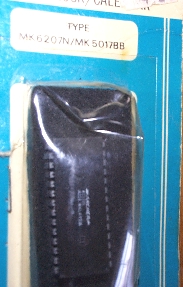
|
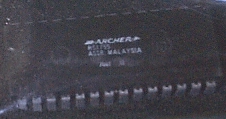
|

|
|
This chip is used in the MITS DC-6 clock,
which typically came as a kit.
|
|
Clock circuit using Panaplex gas-discharge display module.
CMOS clock IC drives multi-digit gas-discharge display. Simple circuit does not include alarm, flashing colon, and AM/PM features. Seven segment-driver circuits and four digit-driver circuits are required, although only one of each is shown. Additional drivers are needed if seconds display is desired. Required supply voltages can be obtained from transformer-type supply driving diode bridge; regulation is not needed.
Clock circuit using LED displays, powered via AC or DC.
When AC power fails, MCD-2 optoisolator senses voltage drop and makes Schmitt trigger force strobe input of clock chip to ground, blanking display and reducing current drain from 200 mA on AC to 12 mA on 9 volt standby battery. Clock will run for days on 1000 mAh battery. Two LED pairs that form colons between time digits are operated from digit strobe lines and remain lit when display is blanked, but draw only 1 mA. |
|
This is a four-digit non-multiplexed clock.
I have a whole bunch of these (somewhere in storage).
Clock circuit powered via 220 volt, 50 Hz AC.
Uses MM5316 alarm clock IC, originally designed to drive LCD or fluorescent displays, but modified here for LED display. Diodes and batteries provide power if AC fails, with blanking of display to extend battery life. Accuracy is poor on batteries but batteries make resetting of time and alarm easier after AC interruption. Alarm uses 555 multivibrator to produce frequency-shift warble on output tone. Time is set by fast and slow buttons, and alarm is set with same buttons while depressing alarm-display button. Transistor type is not critical.
|
| 12 Hour 60 Hz 6-digit clock |
| Part Number | Pins | Package | Hold | Strobe | 1 PPS | 7 Seg | BCD | Digits |
|---|---|---|---|---|---|---|---|---|
| MM5311D | 28 | Ceramic | x | x | x | x | 4/6 | |
| MM5311N | 28 | Molded | x | x | x | x | 4/6 | |
| MM5312D | 24 | Ceramic | x | x | x | 4 | ||
| MM5312N | 24 | Molded | x | x | x | 4 | ||
| MM5313D | 28 | Ceramic | x | x | x | x | 4/6 | |
| MM5313N | 28 | Molded | x | x | x | x | 4/6 | |
| MM5314D | 24 | Ceramic | x | x | x | 4/6 | ||
| MM5314N | 24 | Molded | x | x | x | 4/6 |
Click here for a datasheet that describes the MM5309, MM5311, MM5312, MM5313, MM5314 and MM5315 clock chips.
Click here for the MM5316 datasheet.
Click here for a single-digit clock design using the MM5314.

